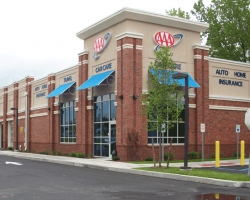Lansing Engineering optimizes the balance of existing property constraints and environmental factors and concerns with the project goals and objectives. An environmentally successful project balances the goals of the client and the project objectives with the character of the landscape and the environmentally sensitive factors.
The key to all successful projects is to evaluate the critical environmental resources at the beginning of the design process. These resources generally include federal wetlands, state wetlands, streams, water bodies, cultural resources, threatened and endangered species, soils, topography, hydrology, hydrogeology, etc. A firm understanding of the attributes and constraints of a parcel allows our design team to integrate science and engineering principles to reduce or eliminate development impacts on the environment and to improve the natural environment, to provide healthy water, air, and land for human habitation and for other organisms.
With our clients objectives in mind Lansing works extensively with local, state and federal agencies to reduce and minimize potential environmental impacts that a project may have while maximizing the project goals. We work diligently alongside local, state and federal regulatory entities to insure that all aspects of the design are in accordance the applicable codes, rules and regulations. Public input is also gathered during the required notification and public hearing periods and consideration of public input is appropriately applied during the design and review process. Lansing Engineering compiles the client, agencies, and public input to design and develop cost effective and environmentally responsible solutions to meet the project goals.




